Head restraints (1st row only)

WARNING
Head restraints supplement the other vehicle safety systems. They may provide additional protection against injury in certain rear end collisions. Adjust the head restraints properly, as specified in this section. Check the adjustment after someone else uses the seat. Do not attach anything to the head restraint stalks or remove the head restraint. Do not use the seat if the head restraint has been removed.
If the head restraint was removed, reinstall and properly adjust the head restraint before an occupant uses the seating position. Failure to follow these instructions can reduce the effectiveness of the head restraints. This may increase the risk of serious injury or death in a collision.
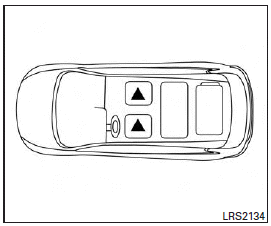
The illustration shows the seating positions equipped with head restraints. The first row head restraints are adjustable.
Indicates the seating position is equipped with a head restraint.
Components
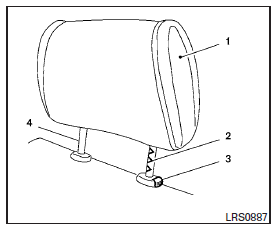
1. Head restraint
2. Adjustment notches
3. Lock knob
4. Stalks
Adjustment
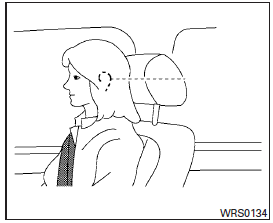
Adjust the head restraint so the center is level with the center of the seat occupant’s ears.
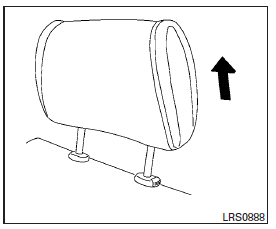
To raise the head restraint, pull it up.
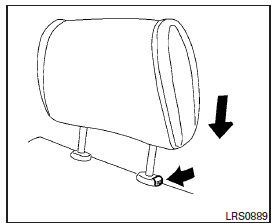
To lower, push and hold the lock knob and push the head restraint down.
Removal (head restraints without Dual head restraint DVD system only)
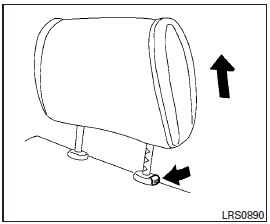
Use the following procedure to remove the adjustable head restraints.
1. Pull the head restraint up to the highest position.
2. Push and hold the lock knob.
3. Remove the head restraint from the seat.
4. Store the head restraint properly so it is not loose in the vehicle.
5. Reinstall and properly adjust the head restraint before an occupant uses the seating position.
Install

1. Align the head restraint stalks with the holes in the seat. Make sure the head restraint is facing the correct direction. The stalk with the adjustment notches 1 must be installed in the hole with the lock knob 2 .
2. Push and hold the lock knob and push the head restraint down.
3. Properly adjust the head restraint before an occupant uses the seating position.
See also:
Welcome light
To activate or deactivate the welcome light
function, perform the following procedure.
1. Push the ignition switch to the ON
position.
2. Open the driver’s side door.
3. Within 20 seconds ...
Unlocking doors and fuel-filler door
1. Push the UNLOCK button 2 on
the Intelligent Key once.
2. The hazard indicator flashes once. The driver’s door and fuel-filler door will unlock.
3. Push the UNLOCK button on the Intelligent Ke ...
Setting memory function
The status of the following settings can be
linked to the Intelligent Key and the
memorized settings can be available for
each Intelligent Key.
► Air conditioner system► Navigation ...
